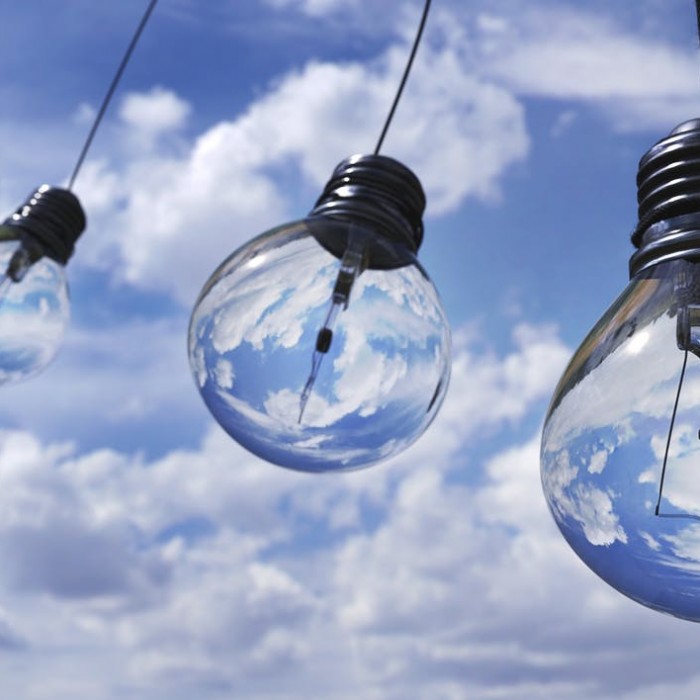March 19, 2017
Angela Romero
Who here wants more ENERGY?
It’s one of the underpinning philosophies here at Energy|Body|Mind (hence the name) and there’s a reason for it; the amount of energy you have impacts on your quality of life EVERYDAY.
If you wake up tired, how much do you feel like fuelling yourself with a healthy breakfast, or going to the gym, or even being mindful throughout the day?
So if Energy is the answer to a lot of your problems, why do so many of us struggle to have enough? Unfortunately, there are many things in our life (particularly STRESS), which rob or drain energy from us, and to replace it; we need to take proactive steps.
So below are the top five ways that you can boost your energy through nutrition to have you bouncing off the walls and having others ask “what are you on?”:
1. Start the day with a supercharged coffee.
“What? Coffee? But I already do that?”. For those who love their coffee, mornings wouldn’t be the same without that warm liquid gold that gives you the ability to function throughout at least half the morning.
Australia’s obsession with coffee is fairly new, comparatively speaking to most European countries. We’re ranked 42nd in the world for coffee consumption, while Finland is number one. Nevertheless, it’s not uncommon for many people to feel emotionally dependent on their barista to get their morning hit!
There are (fortunately) many health benefits associated with MODERATE consumption of caffeine, including increased athletic endurance, healthy brain function, cellular health and longevity, healthy blood sugar levels, and liver support.
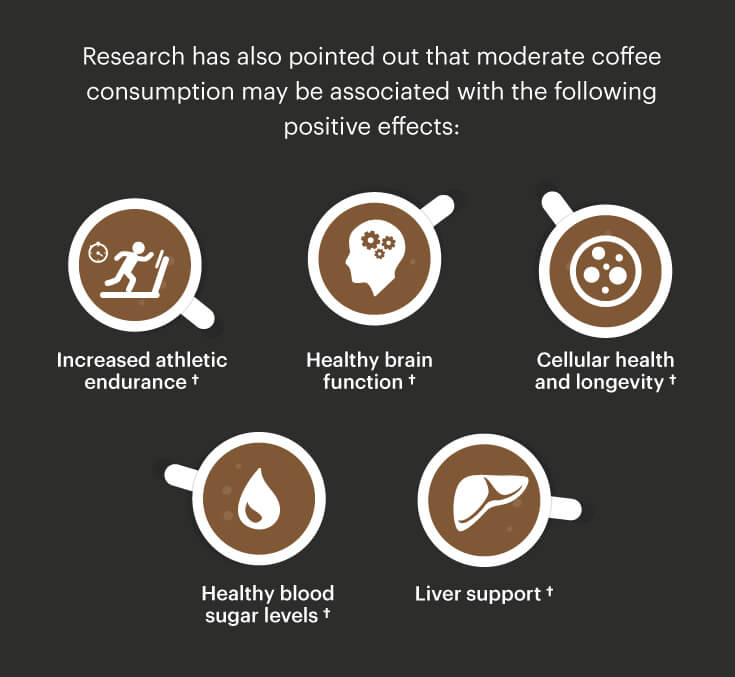
But what happens when we have too MUCH caffeine. Well, it’s like when we consume those sugary energy drinks. They are loaded with that white powder that we already know is bad for us (sugar) plus an unnatural amount of caffeine. When we have too much caffeine we start to experience:
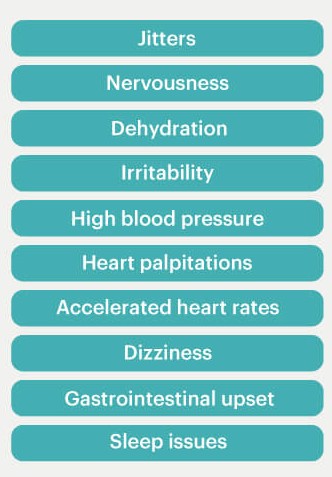
So try to limit yourself to 1 to 2 cups a day. Switch to herbal teas after that and after about 3pm. While some clients swear they can have a cup of coffee and go straight to sleep, it still interrupts your circadian rhythm, which is one thing we don’t want to mess with!
Now what is a ‘supercharged’ coffee? Check out number 2…
2. Get friendly with bone broth.
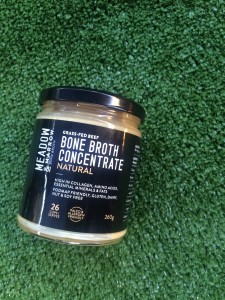
Bone broth has started to receive a lot of attention recently as one of the new ‘superfoods’. Never heard of bone broth? It’s an incredible source of easy to digest protein and a good source of hydration.
Some people like to supercharge their coffee with bone broth. It’s loaded with amino acids, vitamins, and minerals, which takes your coffee from a nice morning drink to an essential go-to energy beverage.
However, bone broth can be added to anything, not just your coffee. Put it in a smoothie, a juice, you can even have it on its own. They even make a bone broth protein powder now (just in case you can’t handle the taste of the pure stuff) and it still gives you a hit of all those amazing benefits.
3. Pump the pump bottle.
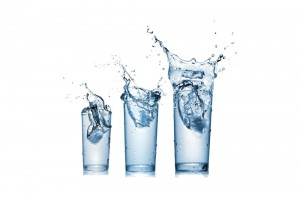
I know what you’re thinking – water really? How is that going to give me energy? Well, being dehydrated is one of the biggest causes of fatigue and exhaustion. It seems that many Australian’s are very dehydrated, and just have no idea that going and filling up their glass could make a huge different to their overall energy.
The average person needs to be drinking about 2 litres of water a day, but if you’re exercising and sweating more, you need to up the anti. Having a glass of water first thing in the morning (or supercharged with lemon or apple cider vinegar) will make a huge difference to your day. Finishing off the day with another glass at least 30 minutes before bed will also keep you hydrated throughout the night.
Remember the mantra: “If I’m thirsty, it’s already too late!”.
4. Go nuts.
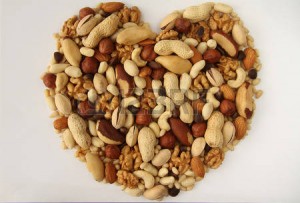
The feeling of pure exhaustion and fatigue can make you feel like you’re going a little nutty at times. It’s a real drain on your physical and emotional needs when you’re not bouncing with energy. Cashews, almonds, and hazelnuts are rich in protein and magnesium, a mineral that plays a key role in converting sugar into energy.
This doesn’t mean you can start to mix nuts with high sugary foods, it just means that they are helping to covert those natural sugars more easily into the fuel you need.
Nuts are a great snack and also a great pick me up, so instead of reaching for those sugary biscuits or chips, try a few nuts with some fruit if you need that 3pm snack.
5. Calling all chocoholics!
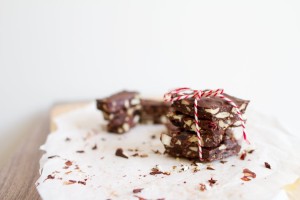
Chocoholics we have good news: a little bit of dark chocolate has been shown to boost your energy and mood. So no you’re not imagining that little rush after you eat that delicious goodness.
Just try and make sure it is DARK chocolate. And by dark, we’re talking at least 70% dark. Some brands claim to have ‘dark’ chocolate, but when you look at the ingredients, they can be as low as 30-40%.
We want to try and just have little bits of the ‘good stuff’, and dark chocolate helps us do that because it is so rich.
So there you have it – the top five ways to boost your energy through different fuel sources. Remember, every time we eat we’re trying to fuel our bodies. If you’re feeling lethargic or tired after you eat certain foods, that may be a sign that your body is NOT using them as a source of fuel (check out what you can do here).
The world has become a pretty unstable and unsettling place at the moment – Donald Trump is in charge of the most powerful country in the world, the UK is in negotiation to leave the rest of the EU, and war continues to rage in the Middle East. One sitting of the news and you’re likely to walk away feeling more down than when you started.
In a time where we’re experiencing the highest standard of living in history, paradoxically we’re also more depressed, anxious and unhappy.
First things first, we need to take care of ourselves. I’m not saying this out of selfishness, or from a ‘every man from himself’ perspective. I’m talking about learning to create happiness and peace from within that can radiate onto others and create a ripple effect. There’s a reason they get you to fit your own oxygen mask on a plane before others – you won’t be able to get someone else’s mask on if you’re not breathing!
So here are the top 6 things that you need to be doing for yourself regularly in 2017. I’m not saying that these things will change the world, but they will definitely help YOU to feel happier, healthier and a more altruistic human.
1. Breathe. It’s amazing how many people aren’t breathing to its full potential. I used to be one of them. I used to just keep all the oxygen in my chest, and not expand the breath into my diaphragm and lower abdomen. When you start to breathe diaphragmatically, the PNS system (learn more on this here) is switched on, and your body starts to relax. It’s great to mindfully breathe like this first thing in the morning and last thing at night before you go to sleep for about five minutes. This will help you to subconsciously breathe like this throughout the day as well. It’s amazing what 5 minutes of deep breathing can do for your mental and physical health!
2. Fuel your body. It’s easy to forget that the reason we eat is to provide fuel to the body. The balance between eating for pleasure and eating for survival has swung considerably to the former and this is having ramifications. Try to make at least one meal a day focused on fuelling for nutrition. Eat nutrient dense foods – like fruits and vegetables – and try and eat as close to the natural source as possible. Processing of foods has changed considerably, and it’s hard to know what’s been added when you can’t understand the ingredients!
3. Move more. Unless you’re an ultra athlete, we could ALL do with more movement. Our sedentary lifestyle has us sitting down more than ever. Unfortunately, one hour of intentional exercise has been shown as not enough to combat the effects of sitting at a desk all day. So we need to start integrating movement throughout the day. Take the stairs instead of the elevator, walk to/from work or a portion of the journey, or go for walking meetings instead of sit down coffees. Do whatever it takes to make that magic 10,000 step number. It’s not in any way easy, but it’s very rewarding for your body.
4. Learn to meditate. If there is only ONE thing that you do this year, learn to meditate. There are yoga studios and meditation centres popping up everywhere, and plenty of resources online that can teach you the fundamentals – I have even made a recording for you here. If you’re already meditating, make it a goal to foster your practice. I could go on and on about the benefits of meditation (and I do so here) but for the sake of this blog, just realise that meditation is one of THE BEST forms of self-care out there. It takes as little as 5 minutes a day, and it can be life changing. Trust me on this one.
5. Embrace minimalism. I have blogged on this already (and will probably continue to!) and it seems to be quite an emerging theme for me (and plenty of others) in 2017. It seems that an excess of ‘stuff’ is manifesting our discontent, and there is no end in sight in the hunt for something new. Cleanout your wardrobe (learn how to here) or de-clutter your office space. Just spend time over the next year clearing the physical to allow the mental space for growth.
6. Sleep. At the end of the day it can feel like there’s just not enough time to do any of those self-care activities. I wouldn’t blame you for telling me so! The proverbial ‘to do list’ continues to grow, and despite the number of items we tick off, it never seems to end. One thing you CAN do that doesn’t require an extra item on the to do list is to sleep. I mean, force yourself at least 7-9 hours of sleep EVERY NIGHT. I can hear you groaning through your computer “who has that much time to sleep?”. The change makers do and so do you. The plane and oxygen analogy is most pertinent here. You will be so much more productive, have so much more energy, be capable of achieving so much more in less time, IF you get more sleep. Try it for a week and see what happens…
Now this may seem like a lot but even if you just pick ONE of these things to do this year, the transformation may just surprise you.
I’ve blogged before on the Elimination Cycle and the steps for preparing, but we’re starting a new cycle of the Elimination Detox TODAY so I wanted there to be another resource for people to learn about this.
There are several symptoms that you may see within yourself that are signs that your body is craving detoxification. These range from:
· Digestive problems e.g. IBS, diarrhea, constipation
· Weight gain
· Cellulite
· Low energy
· Short temper
· Fluid retention
· Skin breakout and congestion
· Sore, red or stingy eyes
· Waking up consistently between 2am-4am
· PMS
· Not feeling hungry for breakfast
These are only SOME of the symptoms. So if you experience any of these, it is your body’s way of saying “I need some time out!”. My body needs to detox about once every six months, and I can tell when it needs it.
I grew up in a household where we had fresh food bought everyday, because the supermarket was conveniently located about 5 minutes from my house. When I moved out of home and into a university dorm, food shifted from being a healthy source of fuel for my body to a pleasure seeking mechanism that had almost no nutritional content. I should’ve caught on when we learnt the suppliers for the college food also serviced several major prison systems in Sydney!
So I got sick. Like really sick. Like waking up in the middle of the night with stomach pains, headaches, and fevers (usually at 3am!). I had every test under the sun to try and find out what was wrong with me. NOTHING. All the doctors said there was nothing medically wrong with me to be causing this. So I turned to a nutritionist and a naturopath who worked together on figuring out what was the underlying cause: food allergies. I was allergic to almost EVERYTHING I was eating.
So I spent the next couple of months going through an Elimination cleanse and figuring out what foods my body would tolerate and serve me as a source of fuel. Now those allergies are all but gone, but occasionally they can rear their ugly heads when I’ve drifted off slightly and started to eat more processed foods. So that’s why I detox every six months. To give the digestive system, the liver, the kidney’s, all a break and a reset!
So what should you expect if you do an Elimination Cleanse? Well let’s start with the withdrawal. Particularly if you have had a diet high in sugar, I’m not going to lie to you – the first 5 to 7 days of this is going to be tough. Sugar is treated like a drug in our brains, and there has been research showing that we become chemically addicted to the white stuff! So that first week you may experience:
Headaches: like any addiction, when you remove it, the body goes into withdrawals. The body has become dependent on this and when it doesn’t get the ‘hit’, will start to cause headaches as it craves for it.
Fatigue: on top of the headaches, your body is now missing the energy boost that sugar used to give it. Think of the highs and lows that you often experience after a sweet – a donut, a muffin, a cup of milky coffee. It gives you a short boost, you have a crash, you crave more sugar, so you give it another hit. It becomes a vicious cycle. When we break that cycle, it is very likely that you may feel sluggish and fatigued.
Irritability: When you make changes in your nutrition the body often responds in very interesting ways. If it’s missing it’s normal pick-me-ups then its common to become more cranky and irritable than usual – think 2 year old child who has missed their afternoon nap.
So what do you do about the cravings? And believe me there are going to be cravings. Depending on how much processed foods, caffeine, sugar and alcohol you were consuming before will ultimately determine how hard the detox will be. However, the ones with the higher levels initially are often the ones who also experience the best benefits!
Here are some of my top tips for helping you get through an Elimination Cleanse:
1. Drink. Drink till you feel like a fish. But only the good stuff: water and herbal teas. Dehydration is often one of the main reasons why we have cravings, and you can often drown them out with water. Try for at least 2 Litres of water everyday during the cleanse. There’s some more tips here on staying hydrated.
2. Move. You know that high that you feel after sugar or caffeine? Your body is going to miss that, so replace it with some exercise. When we move, our body releases the same feel good endorphins PLUS acts as a stress reliever to help with the irritability. This doesn’t mean you have to join a gym and train 7 days a week, just get sweating. Be creative. Get outdoors. It’s summer here in Australia so the opportunities to exercise are endless!
3. Integrate natural sweets. You ARE able to trick your body. When you’re craving something sweet, give it a healthy alternative. Amazingly, sweet root vegetables will give your body a similar satisfaction to lollies, so up the anti on vegetables like carrots and sweet potatoes. Fruits are also a great alternative and there is an abundance of wonderful fruits available at the moment! Pineapple is so sweet, your body will think it’s just had a block of chocolate!
4. Create a network. Firstly, it’s best to warn your family and friends that you may be more irritable than usual during the cleanse. As the toxins leave your body and you go through the withdrawal symptoms, your fuse tends to be a lot shorter than usual. It also helps if those closest to you are aware of what you’re doing to provide extra support in those tough times and to not eat that cupcake in front of you. If you’re lucky, they may even choose to join you!
5. Go easy on yourself. Realise that deciding to take a cleanse is more than what a lot of others do. Beyond that, eliminating ANYTHING unhealthy from your diet is going to be beneficial to your overall health no matter if you do it for a day, a week or a month. Realise that you WILL have slip ups – we are human – so you just go back to the cleanse as soon as its over. Don’t throw away all your hard work just from one slip up.
If you’re not sure where to start, you can join our Elimination Detox Challenge! We start January 16th and all our Eliminators start together and finish together. You will have access to your own manual, support videos and tutorials, plus a step-by-step guide to both the pre – during – post elimination.
You can sign up HERE!
Okay so I think most of you may have heard of the 80/20 rule as this distant principle that you could apply to your life to get some benefit out of. Originally called the Pareto Principle, this philosophy was first applied in business. It was commonly found that 20% of customers lead to most, or 80%, of the sales.
The principle has been taken now into many contexts but the most important one here is for your health. While I’d love to say that 20% of your efforts net an 80% improvement of your results, we need to flip the rule in this context and focus on the 80%. If you make the majority of your choices healthy, you can achieve a healthy lifestyle.
This 80/20 rule is universal; it applies to all aspects of your life. A healthy lifestyle doesn’t come from one ‘good’ or ‘bad’ decision. It is an accumulation of all your health choices each day, each week, each month and each year. You don’t have to be perfect all the time, but you also can’t have cheat meals all the time. You don’t have to go to the gym everyday, but you do need to do some form of movement at least a majority of the week. You don’t have to meditate for hours on end, you can just find 5 minutes every second day to focus on your breathing. If you can eat, exercise, and be mindful 80% of the time, you will see amazing results.
You know why I love this rule so much?
It’s for Life
Every wondered why those “lemon detox diets” or the “soup diet” or the “500 calories every second day” don’t work? They’re not sustainable. The best rule I’ve ever been taught is “if you want to put on weight, then go on a diet”. Diets make our body go into survival mode, and not only hold onto the weight we’re already carrying, but as soon as we return to ‘normal’ eating, we pile on the extra pounds so that we can make it through another famine!
The 80/20 philosophy is not a diet, it’s a lifestyle. It’s a way to make healthy decisions throughout your day/week/month/year. There’s no guilt if you overeat, under exercise or miss a meditation. You just have to balance it out somewhere else. Each day is an attempt to get the most out of your choices. Then tomorrow is a fresh day and you start again.
We can be Human
My clients are sometimes horrified to hear that I don’t live by some amazing health trend that I abide by 100% of the time. When I tell them that I eat a piece of dark chocolate almost every night, (it is 95% dark chocolate though) they almost fall of their chairs. Or the fact that I don’t train at my gym every day. Or that there are days when I don’t meditate.
I am not a robot – I am also human. And humans need a little wiggle room. While my ratios will often be closer to 90/10, I still need that 10%. Allowing yourself to have some space to breathe is necessary to stay on track with your health goals. It’s OK to have cheat meals, days where you don’t move off the couch, and mindless days. Actually it’s more than OK. You NEED them. Fundamentally as a human being. So that’s a big reason why I love this philosophy.
It’s Achievable
When something seems achievable, you are more likely to do it. I like to apply this rule to EACH DAY with my clients at first rather than the bigger picture (though you work to this!). Every decision throughout the day becomes the question “Are the majority of my choices today healthy?”. If you’ve reached 11am and the answer is no, you still have the rest of the day to be making healthy decisions.
For example, in a typical day, if you’ve had a healthy breakfast and then a colleague has brought in Christmas cupcakes for morning tea, don’t beat yourself up for having one. Enjoy it, remove the guilt, and then realise the rest of your day needs to consist of healthy decisions. That means when you get to lunchtime you need to have that salad rather than a burger, and for dinner have the grilled rather than the fried fish option. It’s all about balance.
The Secret for December
Now I have a little secret about this rule for my clients in December, because December is one of the hardest months of the year to keep your health goals going. BUT I’m going to reveal this secret in my free upcoming webinar so you’ll need to tune in on the 15th of December to find out more.
Click HERE to register.
Details: Surviving the Holiday Season
Date: 15th December
Time: 11.30am-12.30pm
Aim: Create tangible ways to keep your health goals going in 2016.
Claim your FREE spot HERE
Ever woken up early to go on a 20 minute run and then spent the rest of the workday rewarding yourself for your efforts with food? I used to use food like my bronze, silver and gold medals. If I did a 30 minutes workout, you got a bronze medal – a kids size snickers bar. If I did 45 minutes, I’d win the silver medal – a white bread bagel with cream cheese. If I did 60 minutes I’d won gold – a burger. I realised that this dangling carrot reward based system is unhealthy for the body and the mind, so I wanted to learn more about why we use food as a reward and how to stop it. There is a curious theology behind the post workout binge, which seems to be both a physical and psychological reaction.
Why We Use Food As A Reward
When we exercise, our bodies release the feel good hormones like serotonin and oxytocin, and reduce the stress hormone cortisol. Those hormones make us feel invincible and like we have run a marathon. We perceive ourselves as healthier and slimmer right away, and think the benefits from exercise will be immediate. Exercise can also trigger hunger, so it’s often not your imagination that you feel more hungry after you exercise. Therefore, on a physical level, we think we can eat more to satisfy our hunger and ‘replenish’ the energy we have lost through exercise.
Emotionally, when we exercise it makes us feel satisfied, accomplished and deserving of reward. Hard effort has been mentally connected to the need for reward. If we work hard in the corporate setting, we expect a promotion, a pay rise or at the very least some recognition. The same goes for exercise. We perceive that the effort put into training requires reward, and as a result, we use food as a way to mentally satisfy ourselves.
Why We Shouldn’t Use Food As A Reward
In relation to the physical side, the number of calories that you actually burn while exercising is surprisingly small. The fact is, even the most intense workout is not an excuse to indulge on sugary treats and carbohydrates. Plus, when you consume these type of carbohydrates, it creates a vicious cycle where it actually makes you even more hungry! Sugar interferes with ghrelin and leptin which are the hormones that signal to your body when it is full. Throw out these hormones and you will never feel satisfied.
A majority of people grossly overestimate the amount they are burning in any given workout while simultaneously overindulging on foods that you may not normally eat. The table below has approximate figures on what you are likely to burn and equated to the amount we can ‘reward’ with.

Source: © Institute of Integrative Nutrition
It’s not that much is it! If you want to lose weight, you need those 298 calories from your 30 minute jog to burn the calories you’re consuming throughout the day, not going towards an extra reward. You can see that using food as a reward can be extremely detrimental to your health goals.
What To Reward Yourself With Instead
It just becomes a habit to reward ourselves with food or drink. My little medal system was comfortable and satisfying (even if temporarily). But as I began to understand the harm it was causing, I started to look for alternatives. I also had to come to terms with the fact that I didn’t need to reward myself for every workout. Setting goals and having milestones that needed to be reached before a reward was given made it seem much more worth the effort.
Below are my three top rewards that I now use for myself when I reach my exercise related goals:
#1 Workout Gear
What better way to reward yourself than with new workout gear? When milestones are reached (like a new weight goal, a new PB for lifting, or a race run well), reward yourself with some new training clothes, shoes or accessories. Again, you can stagger the levels depending on how big the achievement has been, and you can buy something small like a new running hat, or splurge on a new pair of running shoes. The benefit here is two fold; not only do you get something tangible that you can keep as a reward, but it also spurs you onto a new goal because you want to use the new workout gear! It’s a win win.
#2 Indulge Yourself
There are lots of ways to indulge that don’t include food. For the ladies, rewarding yourself with a manicure, or a hair styling session, or new makeup is a great way to reap the benefits from your exercise goals. For the gents, go and buy some new sporting equipment (a new golf club, or tennis racket, or wakeboard), take a weekend trip with some friends, or buy a new accessory or clothes for work like some nice cufflinks or a suit. Again here, when you’ve set milestones that take time and effort to achieve, a gratuitous reward can make all the difference for reaching the goal in the first place!
#3 Recognition
Sometimes, a little bit of recognition of reaching your fitness goal is all you really need. Like in the workplace, a ‘thank-you’ or ‘well done’ from the boss actually can mean a whole lot more than a job title change. Use recognition for your fitness goals as well. This can be something public, like posting on social media after a race or after your weight loss goal, and sharing with your family and friends how well you’re doing. You’re sure to get a lot of recognition through that! But there is also internal recognition. Write down the feelings that you are experiencing from reaching that goal, and focus on what has motivated you to get here, and what will push you for the next goal.
Exercising is wonderful, and the endorphins and energy that you get is now enough for my weekly routine. Instead, with milestones, celebrate the wins (small or big) through non-food rewards, and see your progress skyrocket.
Why do you eat food? For nutrients, for enjoyment, or a combination of both? A good balance between the two is healthy and necessary, but as a society, that balance is starting to fall much more heavily in favour of ‘pleasure’. We are eating more and more (both figuratively and literally) foods that aren’t nutritious and are actually doing more harm than good.
Look at the increase in food intolerances, allergies (skin, hay fever, etc.), irritable bowel syndrome (IBS). Not to mention the even more common bloating, gas, fatigue and brain fog. These are actually all in some way connected to the foods that we eat. I have previously suffered from food intolerances, and have had the same old “you have IBS, nothing we can do about it” from the doctors. But there is a way to rectify the imbalance in our bodies, and one of the best ways to do this is through an elimination diet.
There are many variations on this cycle, with some ranging from plain extreme to some which just cut out the main culprits. I believe that everyone could benefit from some form of elimination diet, as our gut health as a society seems to be declining at a rapid rate. This elimination cycle is a really great way to press the ‘reset’ button on your gut health, and uncover issues that you didn’t even realise were related to your eating habits.
So how do you do an elimination diet? Below are the steps to successfully completing an elimination cycle, but remember, you want to tailor this to your body, and tune into any signs or signals that your body may be giving you.
Step 1: Evaluation
Figure out WHY you’re going to undertake an elimination cycle. Do you have allergies (skin, food, hay fever, etc.), do you have gut irritation (IBS, bloating, gas, etc.), or are you doing this as a reset for your body. If you fall under the first two categories, doing the full elimination diet will be best for you, but I will admit (from personal experience) it is cumbersome and a lot of hard work (but worth it!). If you want to just start with cutting out the main culprits that is a good kickstart, and you can work up to eliminating other foods that may be causing you issues.
Step 2: Plan
This is potentially the most important yet overlooked step in those deciding to do an elimination cycle. This is like meal prep but on steroids. You need to set aside a plan for at least 23 days where you are able to schedule in all your meals. It takes 21-23 days for the antibodies (the ones attacking all your foods – even the good ones) to turn over. You don’t want the old ‘security guards’ reacting to every item you put in your mouth, so if you don’t quit the foods you’re sensitive to for at least that time, the body will start to react to them again a lot sooner. Cooking at home is your best bet when it comes to knowing exactly what is in your food.
Preparation also relates to mental preparation. Realise it’s going to be a tough couple of weeks but always bring yourself back to the ‘why’. Keeping a food journal on how the body feels post meals can help keep you on track. Remind yourself that it is temporary. Short term pain for a longer term outcome.
Step 3: Go Cold Turkey
You may have seen my blog on the 100% rule, which has a strong correlation with this elimination diet. When you have decided that you are going to do this elimination cycle, commit, eliminate, and allow no exceptions. The fundamentals are no gluten, dairy, eggs, soy, fast food, or alcohol for 23 days. That’s the easy part. If you have specific food intolerances or IBS, there may be fresh foods that are causing reactions for you too (I was in this basket!). If that is the case, speaking to a local dietician will help you to sort out what other foods you may need to eliminate and there is more information from NSW Health here.
Step 4: A Typical Day
So what does a typical day look like then? There’s surely nothing left to eat if all those food groups are eliminated? We’ve been tricked into thinking the only foods that are delicious are the ones from a box. Doing this elimination cycle is basically going back to fundamentals; eating fresh fruits, vegetables and lean proteins. Breakfast can be oatmeal with fresh berries and some dairy free milk (like almond or coconut). Lunch can be a salad with all the fresh vegetables plus a lean protein. Dinner is some roasted vegetables with some lean protein again like salmon.
Step 5: Post Cycle
Once you’ve completed the 23 days, look back on how you felt throughout the cycle. Think about how you felt before the cycle and how you now feel after. What are the differences? Then on Day 24, start to reintroduce one eliminated item group e.g. dairy. Allow the body 48 hours with this. If no adverse reactions, try it again. Once you’ve decided whether to allow that food back into your diet, move onto reintroducing group 2. There is no structure here for what order things should be integrated in, however allowing the 48 hours for the body to process each is essential. If you do find that you’re reacting to one of the groups GREAT. You’ve found your culprit. You can mourn the loss of it from you life, and then move on and figure out what you’re going replace it with, i.e. a healthier and more welcomed food for your body.
While an elimination cycle is challenging, it is also immensely rewarding to reset the body to full health. Try it out. It’s just 23 days! See how you feel and please report back.

